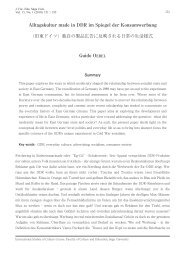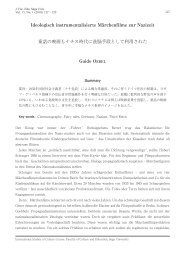ε (eV)
ε (eV)
ε (eV)
Create successful ePaper yourself
Turn your PDF publications into a flip-book with our unique Google optimized e-Paper software.
only by the electrical discharge, have the leading inactivation role [57-112].<br />
Nonetheless, the plasma-"based" sterilization has its important role in deter-<br />
mining the explosion of scientific research in real plasma sterilization systems,<br />
along with several other advantages. These can be synthesized in the low tem-<br />
perature of the processing cycle and the reduced treatment times (up to 3 hours).<br />
Overall, the use of such devices has improved the sterilization of thermosensitive<br />
category of the medical materials. Therefore, their efficiency and the effects on<br />
various materials have been closely monitored in many studies. On the other<br />
hand, the main concerning issue related to their operation is the use of powerful<br />
chemicals in the beginning of the treatment [50, 53, 54]. Despite of its high ef-<br />
ficiency to sterilize endoscopic instruments, Plazlyte TM has presented difficulties<br />
during sterilization of the ophthalmic instruments. It is worth to mention also<br />
that the Plazlyte TM system was retreated from the market.<br />
1.2.5.2 Plasma sterilizers<br />
The plasma sterilizers contains direct current (DC), alternative current (AC),<br />
radio frequency (RF) and microwave (MW) driven discharges produced at low,<br />
medium and high to atmospheric pressures. They were developed and tested for<br />
their potential as alternatives technologies to the existing conventional sterilization<br />
techniques. A schematic classification of low to atmospheric pressure plasma<br />
sources used for microbial inactivation is given in the Table 1.2<br />
11







